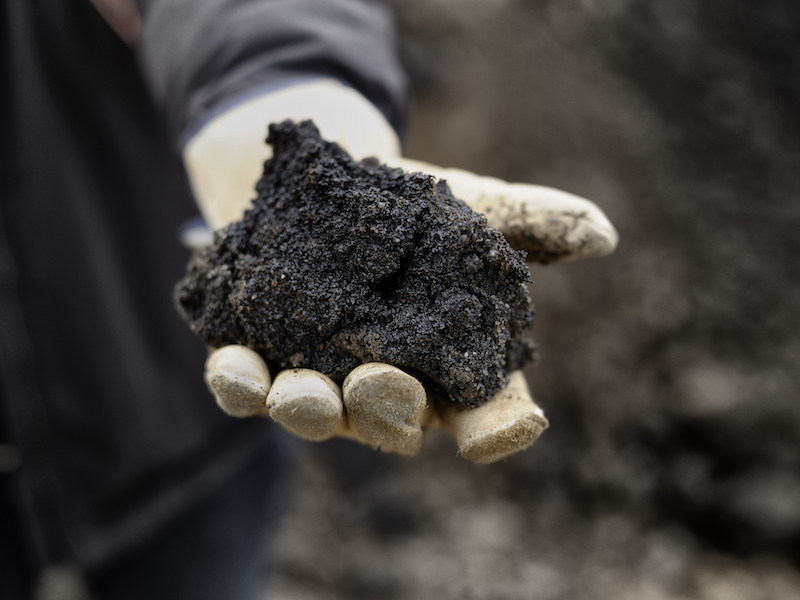

Canadian oil still a solid investment in the age of climate concerns
Zeba Mirza, senior research analyst with Foyston, Gordon & Payne, says Alberta’s oil sands are low-decline, long-life reserves with low geological risk
- Featuring: Zeba Mirza
- March 29, 2022 March 29, 2022
- 15:01
- From: Foyston, Gordon & Payne

(Runtime: 5:00. Read the audio transcript.)
**
The Canadian oil sands are particularly well positioned to benefit from growing demand for energy, low global inventories and war-time supply chain challenges, says Zeba Mirza, a senior research analyst with Foyston, Gordon & Payne.
Speaking on Investment Executive’s Soundbites podcast, Mirza said the oil sector is poised for remarkable performance in the coming months and years.
“I liked this sector before and I like it even more right now. We’ve got strong tailwinds,” she said. “We’re going to be seeing profits; we’re going to be seeing free cash flow. We’re going to be seeing return to shareholders.”
Energy transition
Mirza said the oil sector is currently under-owned, partly because the timing of the transition away from fossil fuels is widely misunderstood.
“Main Street has been reluctant to invest in oil because of a mistaken impression that transition is imminent, and the sector is dead. It really isn’t,” she said. “Globally, we consume 100 barrels a day. And we’ve had 120 years to put the infrastructure in place to enable that consumption. So, replacing that wasn’t ever going to happen overnight.”
On the contrary, replacement fuel sources are still in the development phase, even as the global population and economic activity continue to grow.
“We know that the global population is going to add two billion individuals in the next two decades. And all of those individuals are going to need energy to cook their food, heat their homes and to travel,” she said. “So that’s why we think demand for oil is actually going to be quite strong for a while.”
Mirza acknowledged that oil demand slipped during the Covid-19 pandemic, but the recovery was remarkably quick.
“In April of 2020, about 70% of the globe was at home, under some kind of shelter-in-place order. The roads were empty, the highways were empty. And we still consumed 83 million barrels a day of oil. That’s how resilient oil demand is,” she said.
By December 2021, global demand had bounced back to about 99 million barrels a day, just shy of the pre-pandemic norm.
Despite rising demand, global inventories remain strained. The most recent report from the OECD pegs January’s inventory level at an eight-year low of 2.6 billion barrels, about 8.5% below pre-pandemic levels.
“Tight inventories really bode well for oil prices,” she said, “and frankly we think inventories are going to stay on the tight side.”
Canadian advantages
Meanwhile, Canada benefits from oil sands that lend themselves to more effective carbon capture, low-decline assets, and long-life reserves with low geological risk.
“The key factor here is low decline,” Mirza explained. “In a traditional oil field, the minute you drill a well, it starts to decline, which means you have to replace a third of production just to stay flat. The oil sands are different. Once you set them up in place, there’s not a lot of maintenance capital. You don’t have to continuously drill new wells the way you have to in a shale pit.”
The nature of the oil sands also allows for greater carbon capture technology.
“The oldest plant we really have in the oil sands is Syncrude [Canada Ltd., based in Fort McMurray, Alta.]. That started up in 1973. The newest plant in the oil sands is Fort Hills [owned by Calgary-based Suncor Energy Inc.] and that started up in 2018,” she said. “The new plant actually produces a barrel of oil with 60% fewer emissions per barrel as compared to the old plant. So that it a real improvement which we have seen through technology. And we know that the industry has really committed to improve even further.”
Canada’s long-life assets (50 years in production with another 15 years expected) makes them extremely cost competitive.
“On a full-cycle basis, they generate more free cash flow than any other assets,” Mirza said.
Climate concerns
The biggest headwind facing the industry remains environmental concerns.
“All the pressures from ESG have made themselves heard in boardrooms everywhere. And the end result is companies don’t want to spend 100% of cash flows in the ground. Instead, they want to de-lever their balance sheets and they want to return some money to shareholders,” Mirza said.
Even there, Canada benefits from a strong commitment to environmental responsibility, by both industry players and the federal government.
The five largest oil producers in Canada — Canadian Natural Resources Ltd., Cenovus Energy Inc., Imperial Oil Ltd., MEG Energy Corp., and Suncor — are signatories to the Oil Sands Pathways to Net Zero initiative. It aims to reduce the oil sands’ emissions of 68 million tonnes of CO2 per annum by a third by 2030, another third by 2040, and down to zero by 2050.
“Oh, it’s an ambitious plan, I’ll give you that,” Mirza said. “I really like the staggered approach because it forces the companies to set up discrete, medium-term objectives. They [also] have to set short-term objectives, which allows us to keep them on track.”
**
This article is part of the Soundbites program, sponsored by Canada Life. The article was written without sponsor input.
